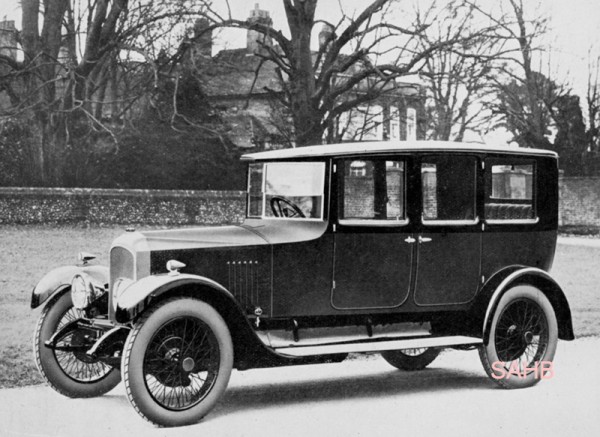
The absence of a number plate on this car suggests that it is a Vauxhall publicity photograph but it is not marked as such, merely the make and 23-60 model, for once, appearing on the reverse side. The body is probably that of a ‘Carlton’ limousine as made by Vauxhall’s regular coachbuilder the Grosvenor Carriage Company. The vee-windscreen was a popular feature particularly on closed coachwork of this period.
The 23-60 is perhaps better-known by its alternative designation: OD-Type, it being an up-dated version of the 4-litre D-Type, the engine of which had been revised in 1922 by the use of push-rod operated overhead valves. As this car has front-wheel brakes, albeit of smaller diameter than those at the rear, this indicates that it must be after mid-1924, the period when they were introduced, whilst the leafless trees point to a post-autumnal date of that year for the shot.
The D-Type that had been introduced in 1913 achieved recognition as a very effective Staff Car during the First World War, some 2,000 being produced for this function during that four-year period, with probably what was an higher number additionally being built up to the end of 1922. Production of the OD ended in 1926 with about 1,400 examples having been made.
Trying to find reliable information on the D and OD models without ploughing through the period journals is exceedingly difficult and it is worth noting that in the book The Griffin Story – which takes its title from the cars’ mascot – published in 1990 by Vauxhall Motors, the comment is made: “The very successful D-Type has had less than its due share of attention from car historians.”
Much the same could also be said about any other Vauxhall model of the up-to-1930 ‘Vintage’ era that is not a 30-98. As for the cars made in the immediate period after the take-over of the business in 1925 by General Motors, people could be excused for thinking that it is somehow impolite to even make reference to them.






